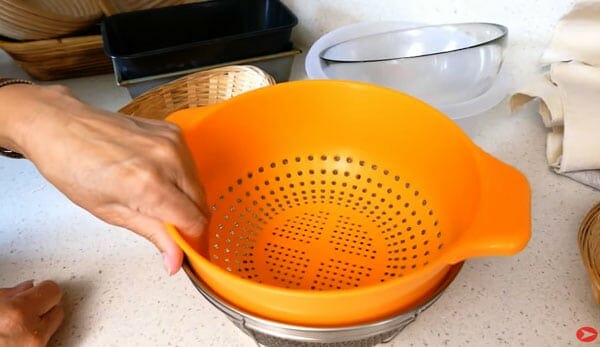Whenever you go to the bakery, buy some boules and serve them on the table, have you ever wondered how bakers pull off the perfectly rounded shape?
If you’re curious, then let us tell you- it’s the work of a proofing basket!
A proofing basket helps bread prove upwards while giving it a shape and texture. This type of basket is typically made of wood, has a spiral pattern, and comes in various shapes and sizes.
Not only do professionals have this item on their cupboards, but also home bakers!
Although a proofing basket does help in attaining the perfect outcome, it is not the only option.
There are other alternatives you can look for in case you don’t want to spend on a proofing basket you would be rarely using.
Now, if you want to know about proofing basket alternatives, keep scrolling!
What Is Proofing?
Proofing is a step in the baking process that involves the activation of yeast in the dough just before it is baked.
When the dough is allowed to rest, the yeast cells absorb carbohydrates and produce carbon dioxide gas, which in turn causes the dough to expand.
Why Is Proofing Important?
When you’re baking bread, you won’t be able to achieve the right quality without proofing it.
If you don’t proof, the yeast in the dough can’t release carbon dioxide gas. That means there will be no air pockets and the bread will appear flatter, denser, and less flavorful.
Bread Proofing Basket Substitutes
1. Bowl

If you don’t have a proofing basket in the house, you can use wooden, plastic, ceramic, or a metal bowl instead. Since regular bowls are round in shape, these are ideal for proofing rounded loaf.
Before you put the dough on a bowl, make sure to dust it with flour or grease it with oil to prevent the dough from sticking to the bowl.
If you are using a bowl with no ridges, you might want to line it with clean fabric in order to prevent the flour from getting off the bowl.
Fabric works well because they remove excess moisture and ensure the baked loaf is perfectly shaped.
Additionally, you can lay a large piece of parchment paper in the bowl, place the dough on top of it and cover the bowl with a linen cloth.
2. Wicker Basket
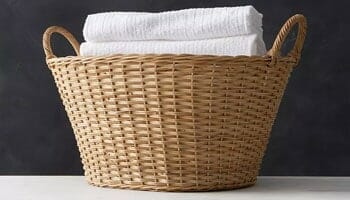
A wicker basket is another good alternative to proofing baskets. Such baskets are breathable, which means they allow minimal airflow onto the surface of the dough and prevent excess moisture from causing the dough to become sticky.
When using a wicker basket, whether it is old or new, it is a good idea to use a linen cloth dusted with enough flour to prevent the dough from getting into the open slots and sticking to the surface.
Depending on the basket you use for the dough, you might get a textured loaf surface.
Unlike proofing baskets, wicker baskets are cheaper and are easily found in shops selling home and kitchen items.
3. Colander
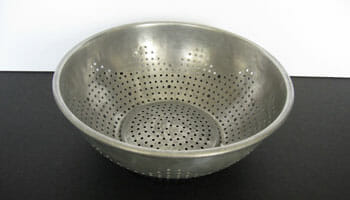
Colanders are not only used for straining water from meat, fruit, and vegetables, but also you can use them for bread proofing.
Like a wicker basket, colander also allows airflow to the dough’s exterior and prevents sticking. You can either use plastic or metal colander for proofing.
All you need to do is place a linen cloth, dust it with flour, place your dough, and cover it to let it rise.
If you have a colander already at home, you can save money on getting a new one and start proofing.
4. Plastic Container
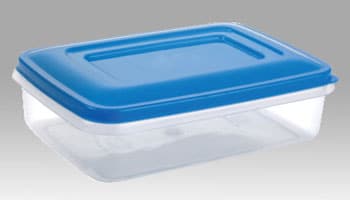
Regardless of round or square shape, plastic containers are also a suitable option.
Such containers shouldn’t disrupt the proofing process as long as they are large enough to accommodate the rising dough. You will also need to grease the inside with oil to prevent the dough from sticking.
Instead of abandoning the extra containers in the back of the cupboard, you might want to make use of them for proofing!
5. Wok
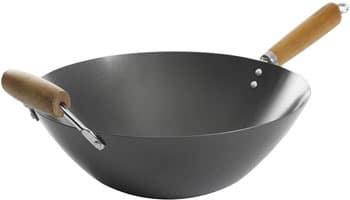
If you don’t want to invest in a proofing basket, you can take out a wok from the cupboard.
Woks also work well when it comes to proofing bread, and it is something commonly found in every kitchen. When using a wok for proofing, make sure it is of the appropriate size for the dough so that it can rise consistently.
Also, don’t forget to use a cloth because it will prevent the dough from reacting with the metal and ruining the taste of the bread.
6. Couche
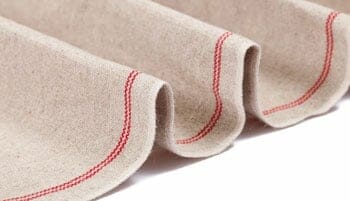
Last but not least, a couche or a proofing cloth lets you proof free-form loaf, like boules or baguettes. It is heavy, and it maintains the shape of the dough as a proofing basket would.
In order to use a couche for proofing, you will need to drop at least a cup of flour on top of the couche and spread it on the surface.
Then you will need to place the dough and wrap it to let the dough rise. If the couche has weave patterns, they will be imprinted onto the surface of the dough.
When using a couche, you might want to add support, like a thick book on each side of the dough to help it rise to a greater distance.
People Also Asked:
What Cloth Should I Use?
The material of the cloth is crucial in this case because it determines whether the dough will stick or not.
Not all fabrics are suitable for proofing bread. You will find some fabrics are more prone to sticking while others leave the fibers all over the dough, hence causing a mess.
We recommend you use a clean linen cloth because it is lightweight, durable, and flexible enough to adapt to the shape of your dough.
It also removes excess moisture from the dough to prevent sticking, and the resulting bread possesses a thin, crunchy crust.
When shopping for linen cloth, make sure it is made of 100% linen, otherwise, you might not get your desired bread quality.
Can I Use Oil Instead Of Cloth?
There’s no rule that you should always stick to cloth when it comes to proofing.
If you don’t have a linen cloth at home, you can take a bowl and brush it with some oil before placing your dough to rest.
Spray oil works well in this case because, unlike regular oil, it doesn’t allow the dough to stick to the bowl’s surface.
Apart from the choice of oil, the final result also depends on the dough type. If the dough has less water in it, it is likely to prove well on an oiled surface.
But, if it has more water inside, it will be sticky, and you can’t use oil for proofing.
What Flour Should I Use To Prevent Sticking?
It is a big mistake if you choose flour for coating the cloth or basket because it will cause the dough to stick to the surface.
When you cover the proofing surface with flour and place dough on it, after a while, the flour on the dough will turn slightly damp, causing gluten development and then stickiness.
To prevent such a mess from happening, it is a good idea to choose rice flour because it works very well for proofing, and you can easily remove the dough from the surface.
How Do These Alternatives Compare To Proofing Baskets?
Not everyone would want to purchase a proofing basket if they’re not baking often or don’t want to spend on one, and so they are likely to try out alternative methods.
Whichever alternative you use, there’s a high chance of not getting the exact results as you would get with a proofing basket.
Despite that, it is possible to attain the closest results as long as you are comfortable in using the alternative and proof bread in optimal conditions.
Related
Final Word
By reading this guide, you’ve probably got an idea about which methods to use in order to make your loaves of bread look fluffy and in good shape.
However, keep in mind that these alternatives will not give you the exact bread quality as proofing baskets do.
Also, it will take some practice before you feel comfortable using your preferred proofing alternative. Apart from that, the good news is- the flavor of the bread won’t be affected!
If you’ve found the above alternatives to proofing baskets helpful, do share them with people who are also looking for substitutes. Happy baking!
Up Next: Get good quality grocery panniers to keep things safe.
SeaRanchLodge.com is a participant in the Amazon Associate program and will earn from qualifying purchases.


